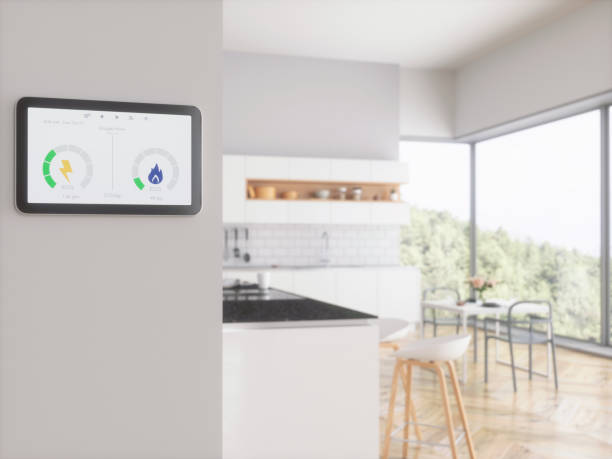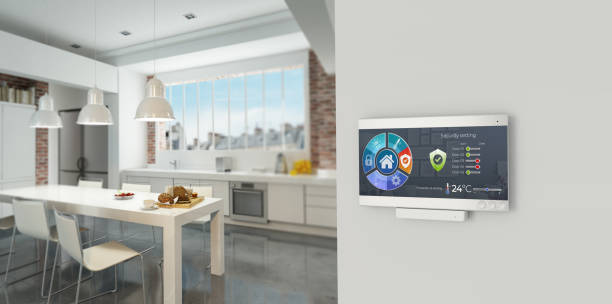
As we step into 2025, the smart home revolution is accelerating at an unprecedented pace. Behind the sleek interfaces and voice commands lies a critical foundation: smart home wiring systems. These systems are evolving rapidly to support the increasing demand for faster, more reliable, and energy-efficient home automation. Whether you’re a homeowner planning a new build or upgrading an existing home, understanding the latest trends in smart home wiring is essential to future-proof your investment.
In this comprehensive guide, we’ll explore the latest smart home wiring trends and technologies, backed by real-world examples, expert insights, and practical tips to help you design a wired infrastructure that meets the needs of tomorrow’s connected homes.
What is Smart Home Wiring?

Smart home wiring refers to the structured network of cables and connections installed within a home to support smart devices such as security cameras, smart lighting, home theaters, and automation hubs. Unlike traditional wiring, which primarily focuses on power delivery, smart wiring integrates high-speed data cables like Cat6 or fiber optics, low-voltage wiring, and specialized protocols to enable seamless communication between devices.
A well-planned smart wiring system acts as the backbone of your home automation, ensuring devices operate smoothly without interference or connectivity issues. It also allows for easy upgrades as new technologies emerge.
Why Smart Home Wiring is Evolving

The surge in Internet of Things (IoT) devices, from smart thermostats to AI-powered security cameras, has pushed the limits of older home wiring systems. Many homes were built before these technologies existed, meaning their wiring can’t handle the increased data loads or power demands.
Wired infrastructure remains vital even in wireless-heavy smart homes because it provides:
- Reliable, high-speed connections for bandwidth-intensive devices
- Stable power delivery through technologies like Power over Ethernet (PoE)
- Reduced signal interference compared to purely wireless setups
As smart homes become more complex, the wiring must evolve to support faster data transmission, energy efficiency, and integration with AI and cloud services.
Latest Trends and Technologies in Smart Home Wiring for 2025
1. Hybrid Wiring Systems: Wired + Wireless Integration
The future of smart home wiring lies in hybrid systems that combine the reliability of wired connections with the flexibility of wireless networks. For example, running Cat6 or fiber optic cables to key areas like living rooms and home offices ensures fast, stable connections for streaming and gaming, while Wi-Fi mesh systems provide wireless coverage throughout the home.
This approach offers the best of both worlds: wired stability for critical devices and wireless convenience for mobile gadgets. Many modern homes pre-wire for Ethernet while also deploying Zigbee or Z-Wave protocols to reduce wiring complexity for sensors and smaller devices.
2. High-Speed Data Transmission Cables: Cat6A and Fiber Optics

To future-proof homes, Cat6A cables and fiber optic wiring are becoming standard. These cables support ultra-fast data speeds and low latency, essential for 4K/8K streaming, VR applications, and smart security systems with multiple HD cameras.
Fiber optics, in particular, offer superior bandwidth and immunity to electromagnetic interference, making them ideal for smart homes with heavy data demands. Some new builds even feature fiber optic backbones connecting smart hubs and network switches.
3. Power over Ethernet (PoE) for Smart Devices
PoE technology delivers both power and data through a single Ethernet cable, simplifying installation and reducing clutter. It’s widely used for devices like IP cameras, Wi-Fi access points, and smart lighting systems.
PoE eliminates the need for separate power supplies, making it easier to install devices in locations without nearby outlets. This trend is gaining traction as more smart devices become PoE-compatible, enhancing efficiency and scalability.
4. AI-Driven Wiring Management and Predictive Maintenance
Artificial Intelligence is entering the realm of wiring management. Emerging systems use AI to monitor the health of wiring infrastructure, detect faults early, and predict maintenance needs before failures occur.
This proactive approach improves system reliability, reduces downtime, and lowers maintenance costs. Smart buildings and high-end smart homes are beginning to adopt AI-powered diagnostics to ensure their wiring systems operate optimally.
5. Sustainable and Eco-Friendly Wiring Materials
Sustainability is a growing priority in smart home design. New wiring materials that are recyclable and have a lower environmental impact are being developed to align with green building certifications.
Homeowners increasingly seek wiring solutions that reduce waste and energy consumption, contributing to overall eco-friendly smart home ecosystems.
6. Enhanced Security Wiring Protocols
With smart home security a top concern, wiring systems now support advanced security protocols, including encrypted communication for cameras, sensors, and alarms. This ensures data privacy and protects homes from cyber threats.
Integration with biometric locks, facial recognition doorbells, and AI-powered monitoring systems requires wiring that can handle secure, high-bandwidth data streams.
Planning Your Smart Home Wiring for the Future
To maximize your smart home’s potential, consider these expert tips when planning wiring:
- Install multiple Cat6 or Cat6A Ethernet drops in living areas, bedrooms, and home offices to support wired internet and PoE devices.
- Pre-wire for security systems with dedicated cables for cameras and alarm panels.
- Ensure neutral wires are available at switch locations to enable smart switches that require them.
- Include in-wall wiring for speakers and entertainment systems to maintain aesthetics and functionality.
- Use conduit or tubing to allow easy cable upgrades without wall damage.
- Hire qualified electricians experienced in smart home wiring to ensure safety and code compliance.
Planning for scalability and flexibility now saves costly rewiring later as your smart home ecosystem grows.
Real-World Examples and Case Studies
- Suburban Smart Home with Hybrid Wiring: A family home pre-wired with Cat6A cables throughout, combined with a mesh Wi-Fi system, supports multiple 4K streaming devices, smart security cameras, and voice assistants without lag or dropouts. AI monitoring alerts the homeowner to wiring issues before they affect performance.
- High-Rise Apartment Using Fiber Optic Backbone: A luxury apartment complex installs fiber optic wiring to each unit, enabling ultra-fast internet and seamless integration with building-wide smart security and energy management systems.
- Eco-Friendly Smart Home Build: A sustainable home uses recyclable wiring materials and energy-efficient PoE lighting, reducing environmental impact while maintaining high-tech functionality.
Frequently Asked Questions (FAQs)
Q1: What is the difference between smart home wiring and traditional wiring?
Smart home wiring integrates high-speed data cables, low-voltage wiring, and power/data delivery technologies like PoE, designed specifically to support connected devices and automation, unlike traditional wiring which focuses mainly on electrical power.
Q2: How much does smart home wiring cost on average?
Costs vary based on home size and complexity but expect to pay more than traditional wiring due to higher-grade cables and professional installation. Investing upfront saves money on future upgrades.
Q3: Can I retrofit smart wiring in an existing home?
Yes, but it can be more challenging and costly. Options include running cables through conduits or using hybrid wireless solutions to minimize invasive work.
Q4: What cables are best for smart home wiring in 2025?
Cat6A and fiber optic cables are recommended for future-proofing due to their high data speeds and reliability.
Q5: How does Power over Ethernet (PoE) benefit smart home devices?
PoE simplifies installation by delivering power and data over a single cable, reducing wiring complexity and enabling flexible device placement.
Q6: Is wireless smart home technology replacing wired systems?
No. Wireless is convenient but wired connections provide superior speed, reliability, and security, especially for bandwidth-heavy or critical devices.
Q7: How do I future-proof my home wiring for smart technology upgrades?
Install high-quality cables (Cat6A or fiber), use conduits for easy cable replacement, plan for multiple Ethernet drops, and consider hybrid wired/wireless systems.
Conclusion
The future of smart home wiring is bright, driven by innovations in hybrid systems, high-speed cables, PoE, AI diagnostics, and sustainability. As smart homes become more sophisticated, investing in a robust, flexible wiring infrastructure is crucial to unlocking the full potential of home automation.
By planning ahead and embracing these latest trends, homeowners can enjoy seamless connectivity, enhanced security, and energy efficiency for years to come. For expert advice and professional smart home wiring solutions, visit SmartHomesBee and take the first step toward your futuristic smart home today.